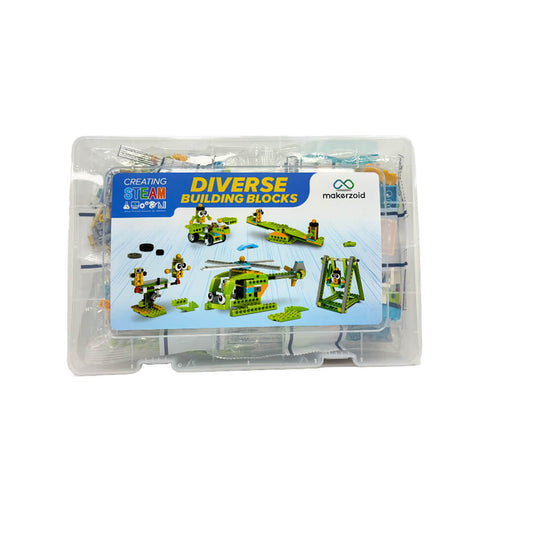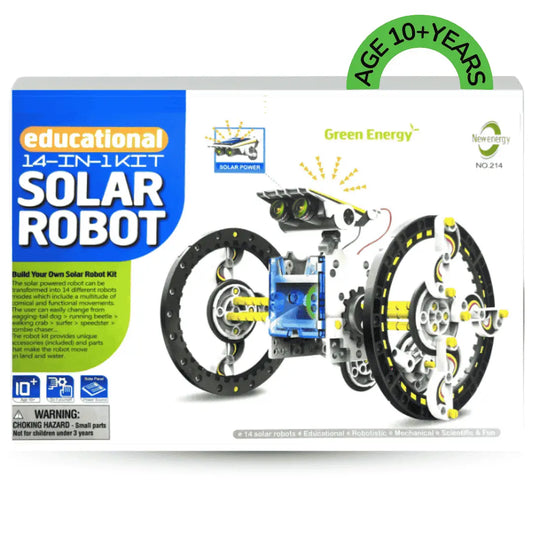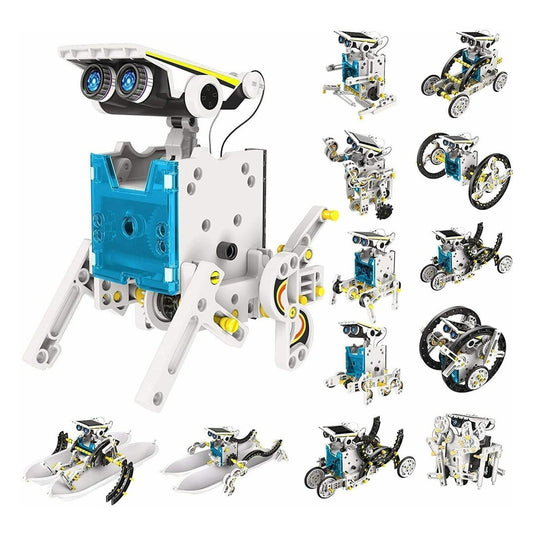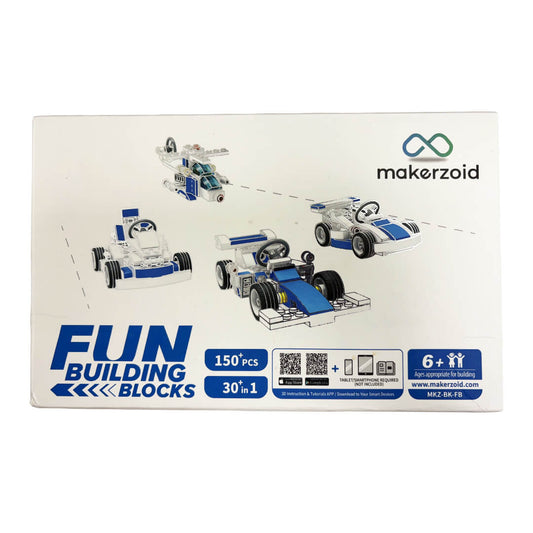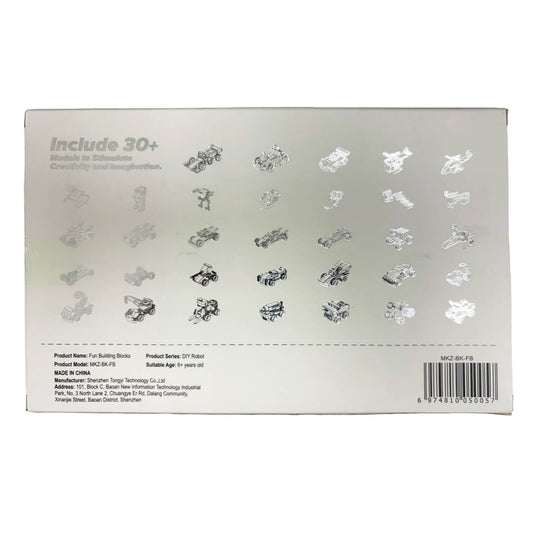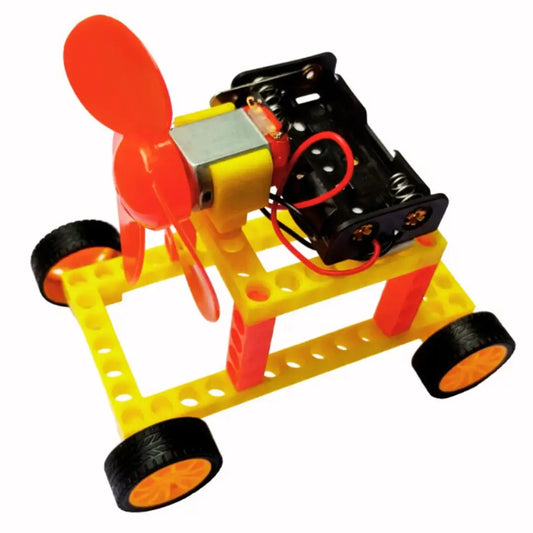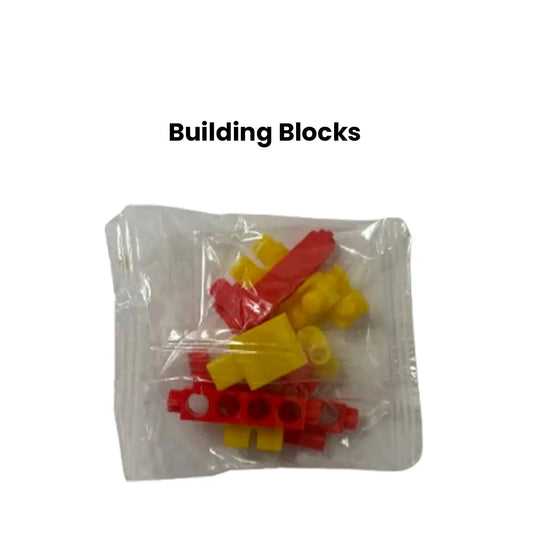
STEAM Toys : Transform Playtime into Learning Time
IEM RoboticsTable of Content
- Are STEAM Toys More than Just Fun?
- Why Start Early with STEAM Toys?
- Why STEAM is better than STEM?
- How to make STEAM Toys at Home?
- STEAM Toys for Kids
- What to look out for in STEAM Toys
- Conclusion
Being a parent, it's just so natural to love those wonderful early years of life. That period is filled with wonder, curiosity, and fast brain development. It is an exciting time when kids absorb everything like sponges. Why not make the most of this important phase by giving them STEAM toys? These are more than just fun; they are great ways to ignite their creativity and learning, creating a good foundation of skills that will enable them to flourish in the future. What is STEAM? Science, Technology, Engineering, Arts, and Math. No need to worry. It is not a book complete with dry textbook material, nor does it refer to boring math problems. STEAM toys bring these concepts to life in a hands-on play that's fun, interactive, and enjoyable! If you want to know how to make STEAM toys at home, you will find that most can be made with readily available materials.
Let's dig a bit deeper into why STEAM toys can benefit toddlers!
Are STEAM Toys More than Just Fun?
STEAM (Science, Technology, Engineering, Arts, and Math) toys are fast gaining popularity because they make learning fun. These offer various developmental benefits, especially for children between 3 and 5 years of age. Learning and implementing STEAM concepts early lays the foundation for a lifetime of curiosity and problem-solving skills and ensures that learning is always a joyous adventure. Let us now explain why STEAM toys are much more than just fun.
• Engage Critical Thinking in Early Life
Imagine your child playing with a toy with levers or pulleys. He plays while imbibing the physics and concepts related to cause and effect while developing his critical thinking abilities. Such playful sessions get him to ask more questions, solve problems, and get more acquainted with the environment surrounding them. He might not even know, but he is learning through all such play that is work.
• Building Fine Motor Skills and Dexterity
Top smart toys for kids encourage them to engage in hands-on activities like stacking building blocks, sorting objects, or solving puzzles. Such seemingly simple tasks help little ones develop fine motor skills and hand-eye coordination—essential skills they will need for writing and drawing as they grow. The repetitive motions of stacking blocks or organizing shapes also enhance their dexterity, which is helpful in their daily lives.
• Developing Creativity and Imagination.
Other than emphasizing logic and math, STEAM toys also help fuel creative impulses. While children engage with the scientific and engineering concepts involved with the toy, they build novel structures, designs, and even stories around it. This balance between well-structured thinking and creativity improves the child's imagination, letting them know that everybody is creative, not only artists.
• Fostering a Growth Mindset
Have you ever noticed your child trying something, failing, and returning to it? That's the beauty of failure in learning. When children interact with STEAM toys, they understand that failure is not the end—it's part of the path to success. Whether building something that collapses or working on a puzzle that doesn't fit, they learn to persevere and modify their approach. This is where resilience and a growth mindset are necessary for them to realize that their intelligence and abilities can expand with effort and practice.
• Hands-on Learning
STEAM toys make science exciting in ways reading about it never can. Using practical experiments, such as building a volcano or demonstrating the functioning of magnets, your child will be allowed to plunge into these. This form of learning stimulates their curiosity and enables them to have a more in-depth understanding of the world they live in. Rather than just knowing facts about science, they experience it! Who would not want an activity where one could mix, build, and create something fantastic?
• Enhancing Social Skills and Teamwork
Most of the best STEAM toys encourage group play, whether it is with siblings, friends, or even you, the parent. Toys that promote collaboration, such as building kits or team challenges, allow children to enhance their communication, teamwork, and empathy as they strive to reach a shared goal. By sharing thoughts, providing input, and resolving issues, they cultivate essential social skills to benefit them.
Why Start Early with STEAM Toys?
Did you know that 90% of a child's brain is already developed by age five? This early phase is crucial—it is when the foundation for future learning abilities is laid. That is why it is really important to introduce smart toys for kids as early as possible. According to recent studies, 67% of parents encourage their kids to engage in STEAM activities, which makes sense. The earlier they start, the better equipped they will be to explore, learn, and develop vital skills.
Why STEAM is better than STEM?
While STEM is often touted as the ideal learning structure, STEAM brings an extra ingredient—the A for Arts. Why does it matter? Art creates emotional expression, creativity, and social awareness in young minds. When the arts are integrated, smart toys for kids allow them to express themselves and learn from math, science, and engineering. It is perfectly balanced between logic and imagination.
• It integrates the Arts: While STEM goes for Science, Technology, Engineering, and Math, STEAM integrates Art-the A. This is vital in developing emotional expression, creativity, and social awareness for a wholesome education.
• It nurtures creativity: The inclusion of the arts in STEAM toys gives a child the chance to express himself through creativity while learning math, science, and engineering skills. It strikes a harmony between logic and imagination.
• Fosters Emotional Expression: Through Art, children are taught to express themselves, enabling them to develop emotional intelligence. Thus, they can express their emotions and ideas through different mediums.
• Promotes Social Awareness: Engaging in creative activities promotes collaborative play, which helps the child develop empathy and better understand the surroundings.
• Caters to Different Learning Styles: Whether your child is a visual, aural, or practical learner, there's a STEAM toy out there to suit his or her needs, making learning more fun and applicable.
How to make STEAM Toys at Home?
Curious about how to make STEAM toys? You can make fun hands-on learning activities with imagination and cardboard, string, magnets, and craft supplies. You can set up a pulley system for kids to learn about some of the principles of engineering, or you can mix baking soda and vinegar in a model volcano for some cool science activities. You can also make geometric shapes using Popsicle sticks, or use food coloring to demonstrate "chemical reactions" in an engaging science experiment.
Combining art and science is simple, too. Think about making spin art with a salad chopper or creating symmetrical designs with folded paper and paint. These homemade STEAM toys not only encourage creativity and problem-solving but also offer a wonderful opportunity to connect with your child through play and learning.
STEAM Toys for Kids
As per a recent survey, the global market for STEM\\STEAM toys has been valued at $5.2 billion in 2022 and is expected to reach $11.2 billion by 2031. Some of the best smart toys for kids, which focus on STEAM, are given below -
Magnetic Building Blocks
Is your child fascinated by stacking, building, or discovering how things work? Magnetic Building Blocks are an excellent option! These vibrant, user-friendly tiles will support your child's development of crucial skills while they enjoy themselves.
• Interactive Science: Watch as your child delves into the world of magnetism, experimenting with attraction and repulsion. They'll grasp the basics of cause and effect while constructing dynamic structures.
• Technology Skills: The more they play with and move around the tiles, the finer their motor skills and spatial awareness will become, solidifying technology concepts in their minds.
• Engineering Ideas: Both 2D and 3D designs are made here, and students learn all about balance, stability, and aesthetics—the key to sound engineering!
• Creative Art: The colors are bright and varied, which allows children to use math to create new and creative color schemes.
• Math Foundations: By counting, sorting, and discovering symmetry, your child will get a solid foundation in math
Art and Crafts Kits
Are you looking for an educational toy that combines fun? Art and Craft Kits open children's eyes to the colorful world of colors, shapes, and patterns. These kits are perfect for developing creativity and learning basic design and math.
• Science Discovery: Using materials such as clay, paint, and paper, your child will develop a sense of wonder about texture, color, and interaction, leading them to want to explore the world around them.
• Technology Skills: Scissors, glue, and markers may seem like the most basic tools, but they are essential in helping your child develop foundational tech skills and improve hand-eye coordination.
• Engineering Concepts: By building models, your child will enhance their problem-solving abilities spatial awareness, and gain insights into stability and balance.
• Creative Expression: The opportunities for creativity are limitless as your child experiments with color, shape, and balance, all while engaging in inventive problem-solving.
• Math Skills: Activities like counting, sorting, and organizing objects by size or shape will help develop early math skills and a grasp of geometry.
Augmented Reality Learning Tools
Enhance your child's learning process with AR toys that interact with 3D versions of animals, the human body, and the universe!
• Interactive Science Exploration: Your child will be immersed in the fascinating world of science, making him look at life, such as animals, space, and human biology, through these interactive 3D models that make it a little bit fun to try to remember.
• Technological Literacy: By playing around with digital tools, your child will be introduced to newer concepts and will have foundational technology skills, such as controller device navigation and spatial awareness.
• Problem Solving: AR toys engage children's cognitive skills; they encourage solving real-life problems while allowing artistic expression.
• Artistic creation: Vibrant designs and colorful shapes can be made or animated using various kinds of creative expression, blended into innovative technology.
• Math Visualization: AR games help children learn essential math concepts such as shapes, patterns, counting, and logic
Role Play and Storytelling Tools
What if your child could become an astronaut, a doctor, or a builder all in one day? Role-play and storytelling tools allow children to step into various worlds and use their imagination to bring stories to life.
• Technology: Interactive story devices such as audiobooks or storytelling robots help children get familiar with basic technology, encouraging them to interact with the world in fun and interactive ways.
• Engineering: Toys such as construction kits or tool sets inspire your child to learn about building nurturing problem-solving skills as they play.
• Arts: Storytelling and role-play help children express their emotions and creativity by making costumes, playing with puppets, and acting out different scenes.
• Math: Count Shapes, measure distances, or estimate sizes during play—blending math concepts into their imaginative experiences.
• Language & Communication: Narration and interactive storytelling enhance vocabulary, comprehension, and communication skills, vital for developing STEAM concepts.
Science Kits
Is your child fascinated by the marvels of nature? The smart toy for kids which are science-based are an excellent chance for them to experiment, explore, and discover things right at home. These kits combine hands-on activities with scientific exploration.
• Science Inquiry: Kids can delve into color-mixing crystal growing and witness crucial chemical reactions, which can make them curious about the world.
• Engineering: Most science kits have building projects that teach your child about stability, design, and construction, giving them a glimpse into the engineering world.
• Art: Making colorful slime or constructing models brings Art into science, encouraging creativity and an understanding of textures, designs, and patterns.
• Mathematics: From counting to measuring liquids or sorting objects, science kits weave in early math skills such as numeracy, measurement, and shape recognition
Coding Toys
Have you ever thought about how computers function? With Coding Toys, your child can learn the fundamentals of programming and problem-solving engagingly and interactively.
• Encourages Logical Thinking: Coding toys assist children in understanding sequencing, patterns, and logic—key skills in both math and engineering.
• Develops Problem-Solving Skills: These toys promote critical thinking as kids tackle challenges and create programs, setting the stage for future tech enthusiasts.
• Introduces Computational Thinking: The child learns to decompose problems into smaller parts and manageable chunks, developing logical thought processes integral to STEM.
• Mathematical Skills: Coding involves counting, pattern recognition, and application of sequences, enhancing mathematical understanding.
• Encourages Creativity: Through coding toys, children learn to merge logic with creativity and realize that technology is not only technical but also an artistic medium.
What to look out for in STEAM Toys
As a parent, here are several things to look out for when choosing the right STEAM toys for your child:
• Age-Appropriateness: Select toys tailored for 3- to 5-year-olds—challenging enough to engage them but not overly complex.
• Unstructured Play: Opt for toys that encourage free exploration, allowing your child the freedom to discover and create.
• Safety and Durability: Prioritize safety. Look for toys made from non-toxic, child-safe materials that can endure rough handling.
• Engagement: Choose toys that require your child's active involvement, such as building, drawing, or experimenting.
• Learning Potential: The best STEAM toys balance education and fun, enabling your child to develop the necessary skills while having a blast.
Conclusion
STEAM toys are not just playtime but are a way of preparing your child to think like an innovator, creator, and problem-solver. Introducing these early gives them tools to understand the world, dream big, and build a future full of possibilities. What's stopping you? Steer into the world of STEAM and watch your child's curiosity and confidence soar!


